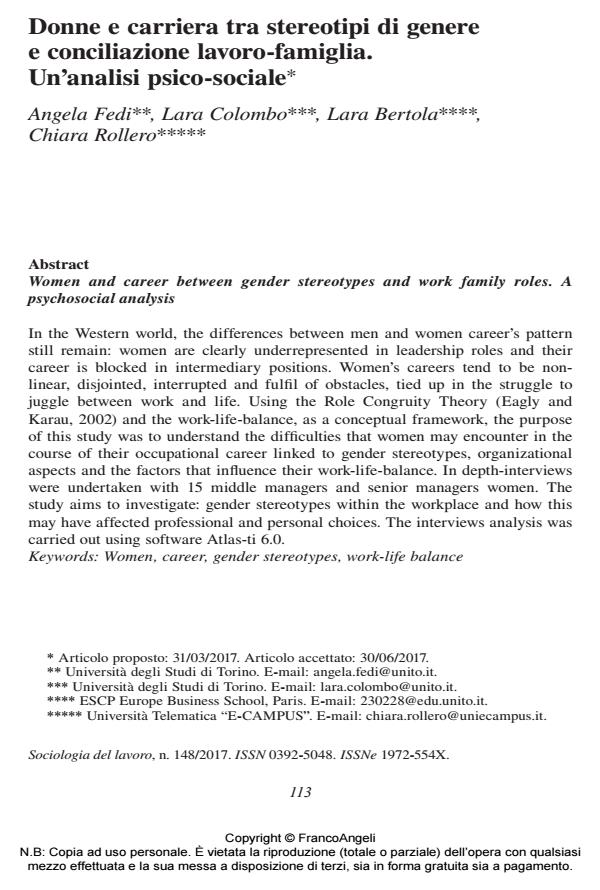Women and career between gender stereotypes and work family roles. A psychosocial analysis
Journal title SOCIOLOGIA DEL LAVORO
Author/s Angela Fedi, Lara Colombo, Lara Bertola, Chiara Rollero
Publishing Year 2017 Issue 2017/148
Language Italian Pages 21 P. 113-133 File size 138 KB
DOI 10.3280/SL2017-148007
DOI is like a bar code for intellectual property: to have more infomation
click here
Below, you can see the article first page
If you want to buy this article in PDF format, you can do it, following the instructions to buy download credits

FrancoAngeli is member of Publishers International Linking Association, Inc (PILA), a not-for-profit association which run the CrossRef service enabling links to and from online scholarly content.
In the Western world, the differences between men and women career’s pattern still remain: women are clearly underrepresented in leadership roles and their career is blocked in intermediary positions. Women’s careers tend to be nonlinear, disjointed, interrupted and fulfil of obstacles, tied up in the struggle to juggle between work and life. Using the Role Congruity Theory (Eagly and Karau, 2002) and the work-life-balance, as a conceptual framework, the purpose of this study was to understand the difficulties that women may encounter in the course of their occupational career linked to gender stereotypes, organizational aspects and the factors that influence their work-life-balance. In depth-interviews were undertaken with 15 middle managers and senior managers women. The study aims to investigate: gender stereotypes within the workplace and how this may have affected professional and personal choices. The interviews analysis was carried out using software Atlasti 6.0.
Keywords: Women, career, gender stereotypes, work-life balance
- Are work–life policies fair for a woman’s career? An Italian qualitative study of the backlash phenomenon Lara Bertola, Lara Colombo, Angela Fedi, Mara Martini, in Gender in Management: An International Journal
/2023 pp.1
DOI: 10.1108/GM-12-2021-0366
Angela Fedi, Lara Colombo, Lara Bertola, Chiara Rollero, Donne e carriera tra stereotipi di genere e conciliazione lavoro-famiglia. Un’analisi psico-sociale in "SOCIOLOGIA DEL LAVORO " 148/2017, pp 113-133, DOI: 10.3280/SL2017-148007